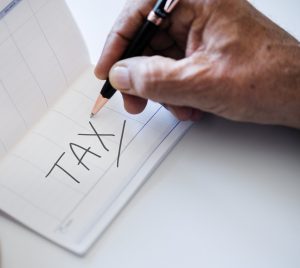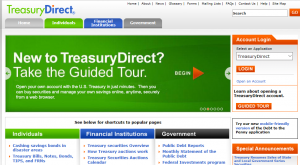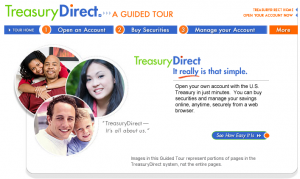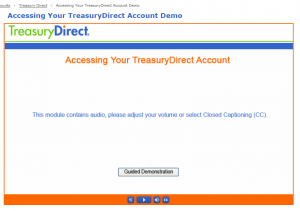 It’s important to understand that inflation protection is removed when taxes are applied. Current tax rules disregard inflation, and as a result it’s easy to demonstrate that inflation can cause all of our interest on a TIPS and some of our principle to be lost through taxation alone.
It’s important to understand that inflation protection is removed when taxes are applied. Current tax rules disregard inflation, and as a result it’s easy to demonstrate that inflation can cause all of our interest on a TIPS and some of our principle to be lost through taxation alone.
When we consider our inflation adjusted returns, we can easily see that the real tax rate climbs to astronomical levels. This simple example shows how easy it is for taxes to use up all of our real returns.
A Revealing Example
Let’s consider the effects of taxes on our inflation adjusted gains. These adjusted gains are what finance professionals call our “real” gains.
Let’s use the actual TIPS that is being offered as I write this and our current inflation rate. Our current inflation rate is actually 2.2% but we will use 2% make it easier and more conservative. If you buy a $1000, Ten year TIPS with a 0.5% interest rate and experience inflation that averages about 2% during that time, the overall real gain would be 5% over 10 years and the overall inflation adjustment if it stayed the same during that period would be 20%.
After 10 years, your principle would be adjusted to $1,200 and you would have been paid about $60 in interest. The problem is that you are not taxed on the just the $60. The tax rules require that you be taxed on the $60 real gain + the $200 of principle adjustment. If you are paying taxes at a low 15% rate, the rules say that you must pay 15% of $260 or $39. Since you really only earned $60 in real value, you will have paid 65% in taxes.
That’s a very high tax rate for sure, but look what would happen if we had an unusual amount of inflation. This is something we need to consider because our intention is to protect ourselves from both average and unusual changes in inflation.
Let’s change the average inflation to 5%. After 10 years, your adjusted principle would now be $1500 and your 0.5% interest would be $75. Your tax on $575 at 15% would now be $86.25. Since you only really earned $75, taxes will have taken all of your real gain and forced you to take a loss of $11.25 on top of that. That comes out to be a real interest rate of -0.1125% and a real tax rate of 115%.
In a taxable account, the greater the inflation, the less the protection. I can’t honestly say that it provides any protection at all because a taxable account amplifies inflation. It is wrong to assume that our savings is inflation protected just because we hold a TIPS.
One Safe Place
If you open a tax advantaged account such as a 401k or an IRA at a brokerage that allows you to hold TIPS within it, your savings is guaranteed to be protected. That’s because all growth in a tax advantaged account is either not taxable or tax deferred. This means that all inflation adjustments to your TIPS principle will only be taxed once, either before you put it into a Roth IRA or 401k or after you take it out of a traditional IRA or 401k.
The combination of a tax advantaged account and TIPS is currently the only option that I am aware of that will guarantee inflation protection to a person attempting to save money in United States.
I Bonds are Only Guaranteed in Certain Cases
I Bonds are tax advantaged in that they are exempt from state and local taxes. That makes them an even better option than other “safe” investments. This still does not protect them from a total loss of real gains through federal taxation on inflationary gains. There is one more advantage though. If an I Bond is used for tuition, it is tax free and becomes a great way to save for a child’s education.
It is also possible to sell your I bonds at a time in which your taxable income is below your exemption allowance. If your total income falls below the your permitted exemption, then your I Bonds are tax free for that year.
A Problem for All Investments
It’s very important for all investors to understand that this problem exists outside of TIPS and I Bonds. As far as I know, all investments have the potential of losing all of their real gains through taxes that are amplified by inflation. Here’s an explanation of the effects on capital gains:
It’s not just a problem for investors, though. Inflationary gains are taxed in your very own bank account. Your interest may be only $1 per year, and you may have actually lost $5 of purchasing power in your account. You would think that would mean that you lost $4 in purchasing power. Since you pay taxes on your inflationary gain of $1, it pushes the loss even lower than $4. Inflation amplifies your taxation because the more inflation there is, the more tax you pay.
Important Things to Remember about Tax Advantaged Accounts
If you have the ability to have 401k, I highly suggest that you do that. IRAs only allow you to contribute $6,000 per year for those under the age of 50 and $7,000 per year for those over 50. 401k’s allow you to hold far more depending on your income.
If you are a high-income individual. You currently have no guaranteed protection from inflation for savings that I know of. It may be a good idea to consider moving your investments overseas. There are several nations that don’t have capital gains taxes including Mexico and New Zealand.



 Bonds are one of the easiest and most common ways to save money for the long term. There’s a good chance you already own one. If you have a certificate of deposit at your bank or your credit union, you own a kind of a bond. CD’s are quite a bit different than other kinds of bonds, but they have many things in common.
Bonds are one of the easiest and most common ways to save money for the long term. There’s a good chance you already own one. If you have a certificate of deposit at your bank or your credit union, you own a kind of a bond. CD’s are quite a bit different than other kinds of bonds, but they have many things in common. You may have seen an article or heard someone at your bank talk about putting some money in a CD ladder. This arrangement helps you take advantage of changes in interest rates over time. It’s another way to attempt to deal with inflation issues as well.
You may have seen an article or heard someone at your bank talk about putting some money in a CD ladder. This arrangement helps you take advantage of changes in interest rates over time. It’s another way to attempt to deal with inflation issues as well.